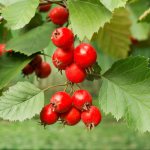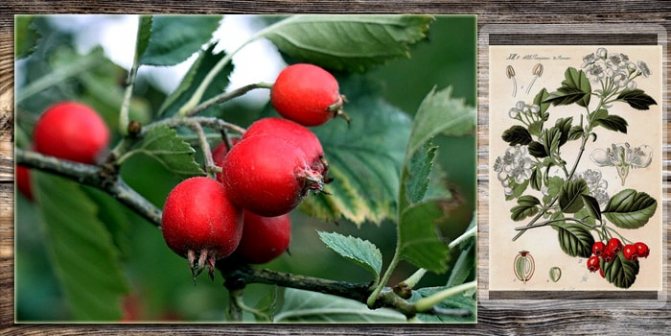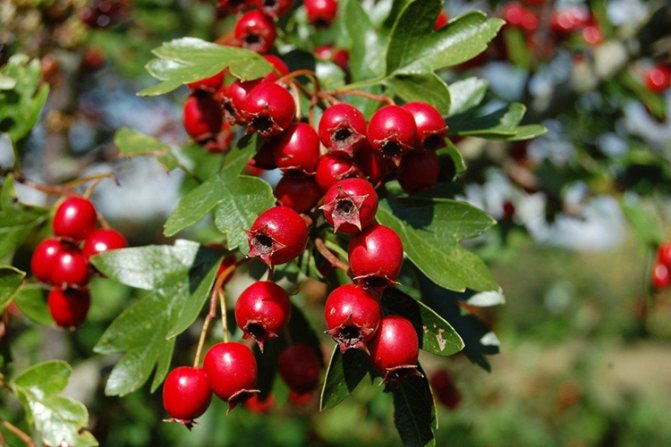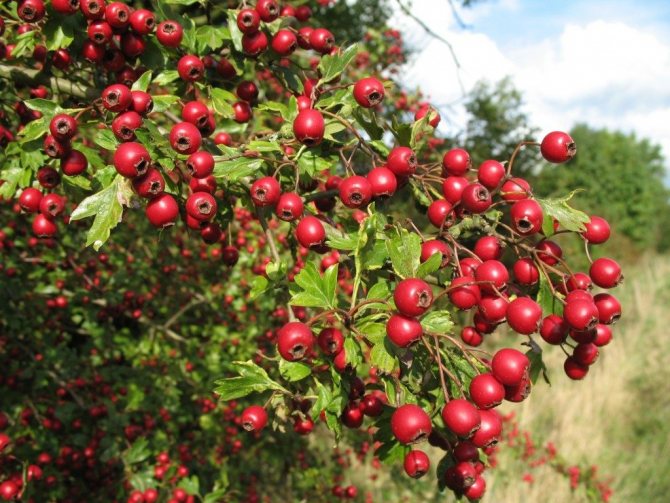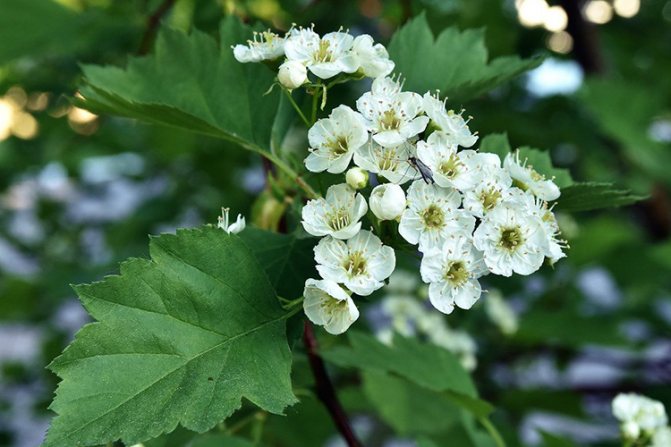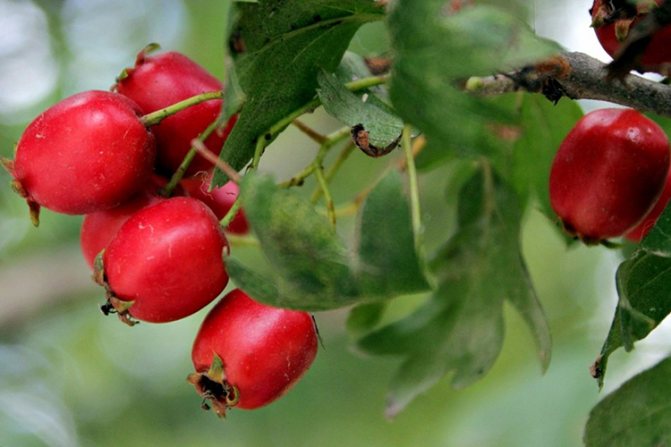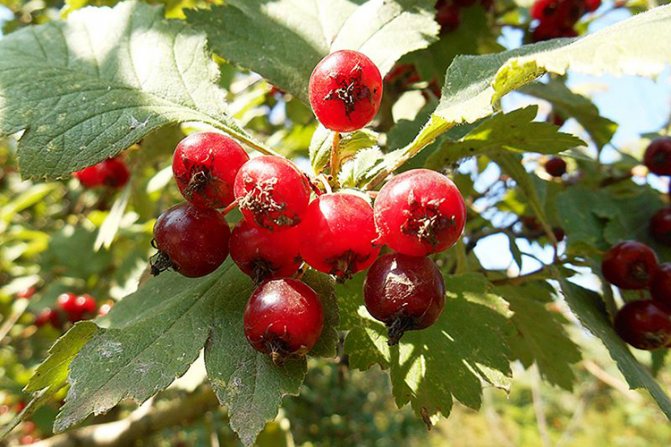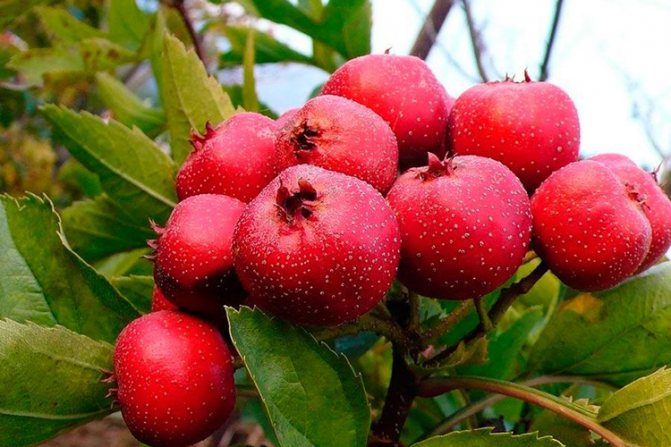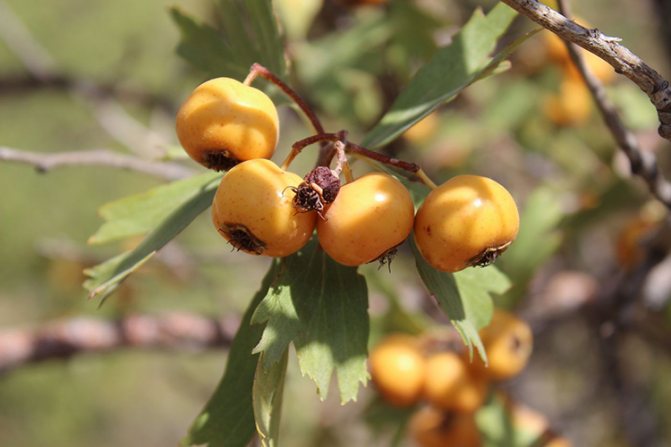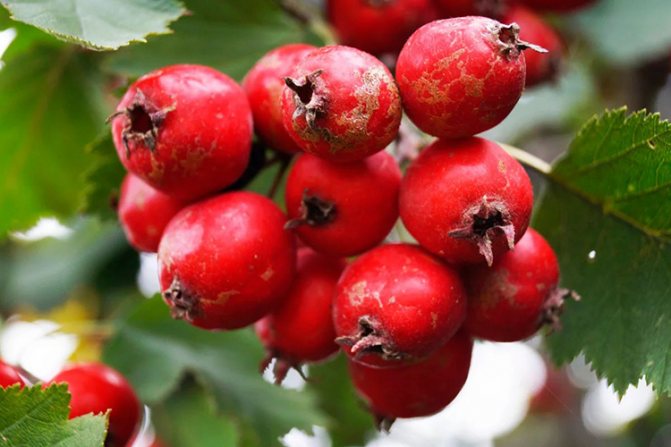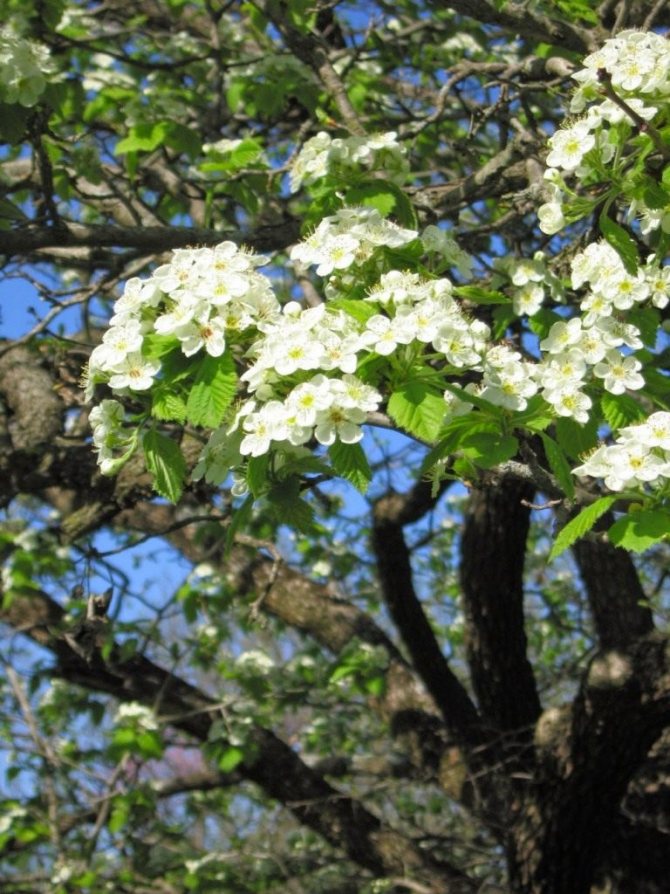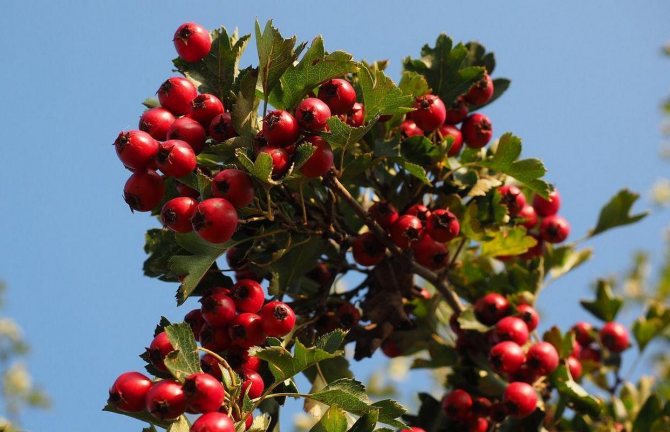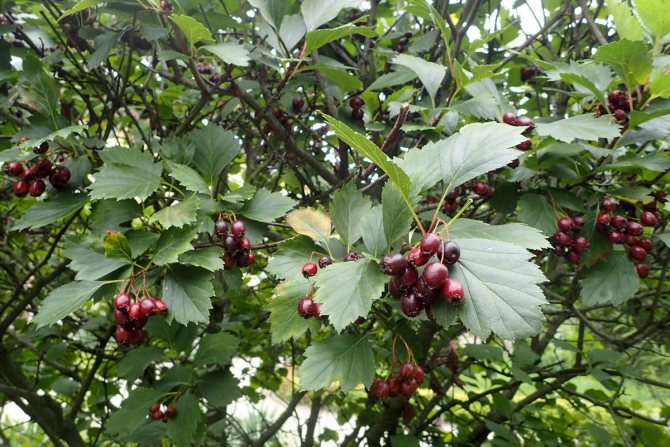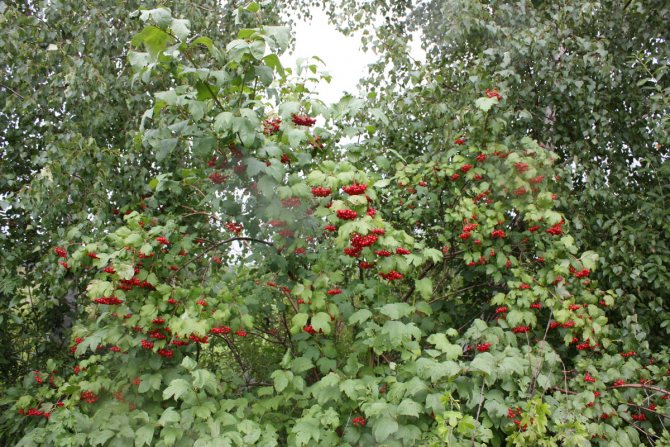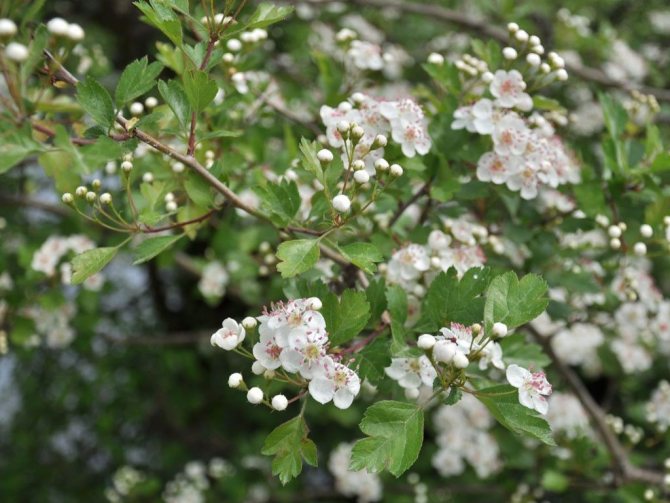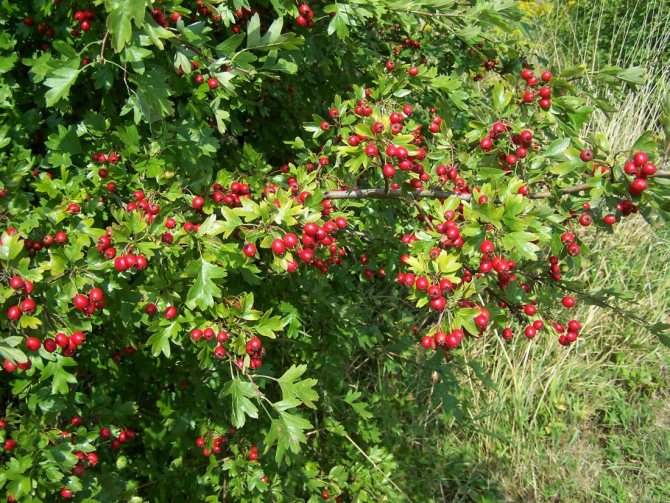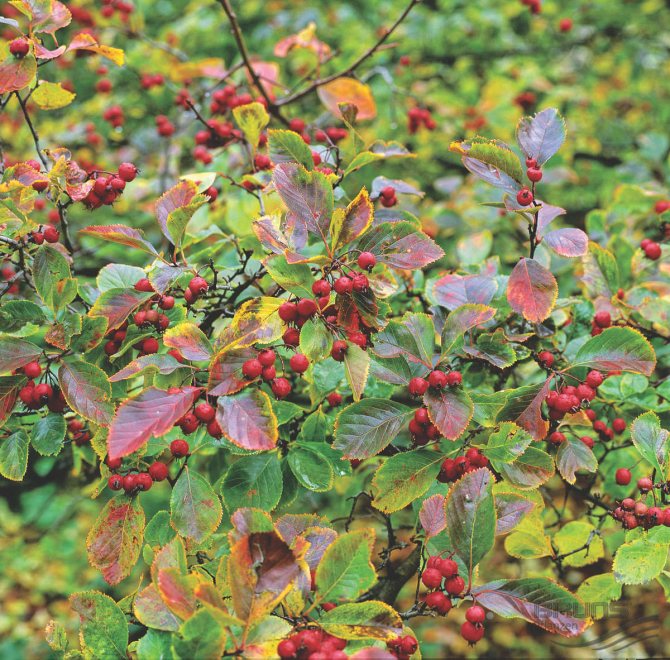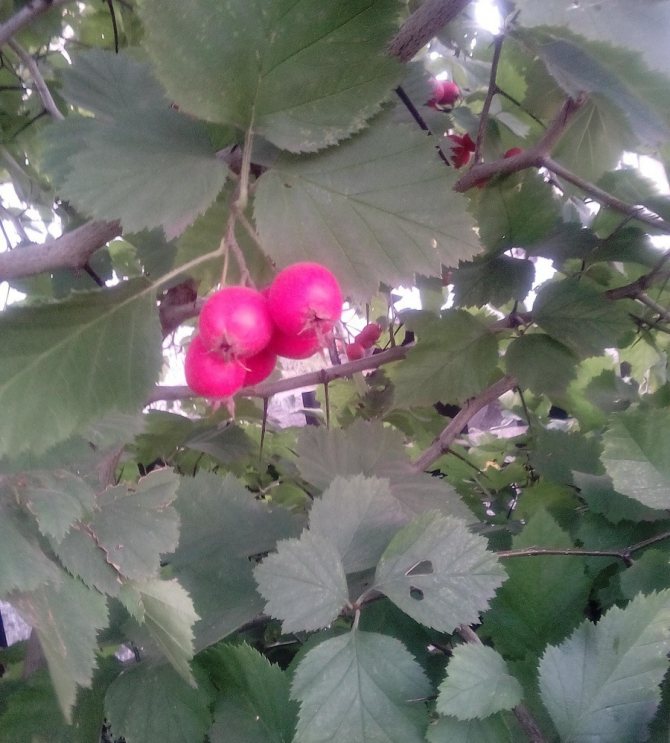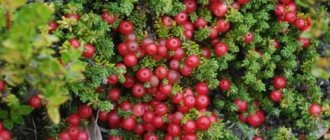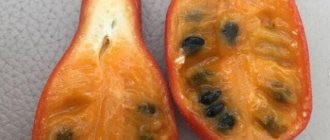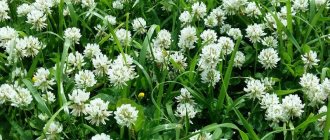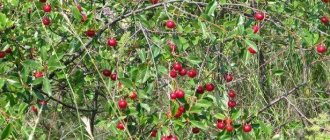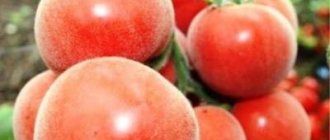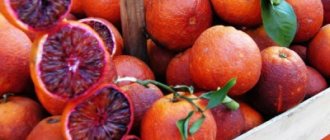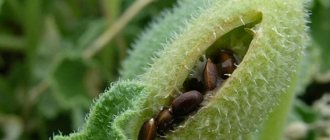Common hawthorn. Family: Pink. Its other names are: prickly hawthorn, smoothed hawthorn, "lady" -tree. In its natural habitat, it is found mainly on the North American continent and in European countries.
In nature, this unpretentious plant settles on the edges of mixed forests. Hawthorn loves when clay predominates in the soil.
Its name is translated as "strong". Probably because the life of a plant is several hundred years. But maybe the reason is the special strength of the wood.
Also, the name of the hawthorn could appear from the word "boyarynya" or "hawthorn". There is a beautiful legend about a beautiful girl wearing a wreath of blooming hawthorn on her head.
Habitat
The hawthorn genus has more than 200 species and about 2000 hybrid forms and is characterized by high vitality: this culture can grow in one place for about 300-400 years.
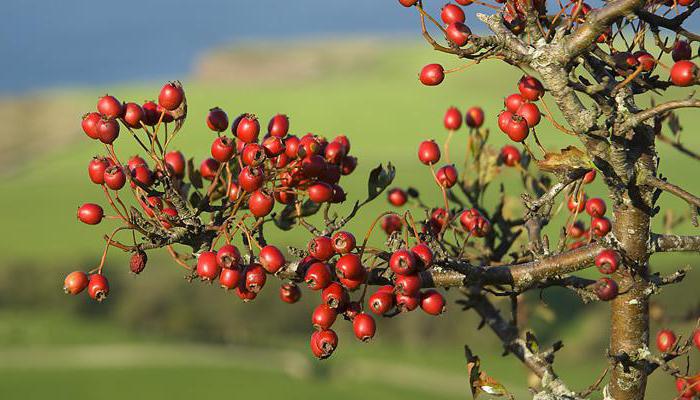
It is distributed mainly in the temperate regions (between 30o and 60o) of the Northern Hemisphere; these are mainly America and Eurasia, Western and Eastern Siberia, the Caucasus, the Urals, Central Asia. Growing area: forest and forest-steppe ecosystems, forest edges, woodlands, river valleys. The hawthorn looks harmoniously in parks, near houses, in gardens. It reproduces in a natural way with the help of birds, which eat the fruits of the plant and carry its bones when emptying.
Spread
This type of hawthorn is widespread in our country. The plant grows in the European part of Russia, Siberia, Transbaikalia. In Asian countries, hawthorn populated Kazakhstan, China, Central Asia, Mongolia. In the central regions of our country, blood-red hawthorn is grown as an ornamental plant.
Feral species are found in the Moscow, Vladimir and Yaroslavl regions. It prefers to settle in the steppe zones, forests (mainly on the edges), in the floodplains of rivers. This is an unpretentious, frost-resistant plant. It develops most actively on pebble, sandy, alluvial soils. Feels great on poorly cultivated soils, but subject to the absence of excess moisture and nearby groundwater.
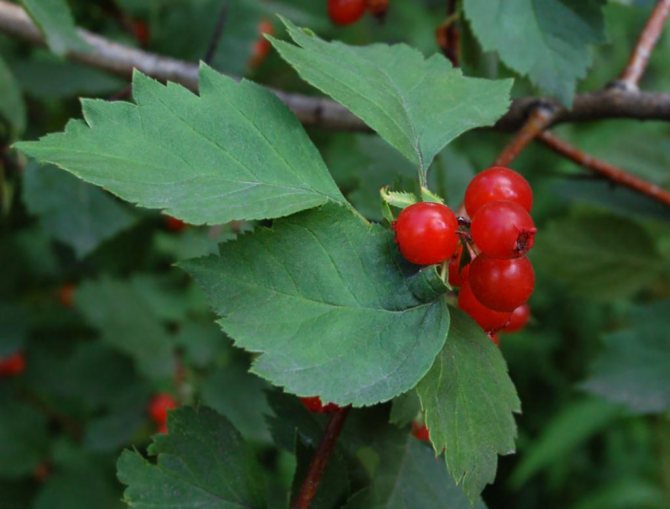

Common hawthorn: description
A shrub or tree is characterized by a dense, round crown; shoots are characterized by a purple-red color. The plant has thorns (the so-called modified shoots). Hawthorn flowers are collected in thyroid-shaped inflorescences, white, in garden specimens they can be red or pink.
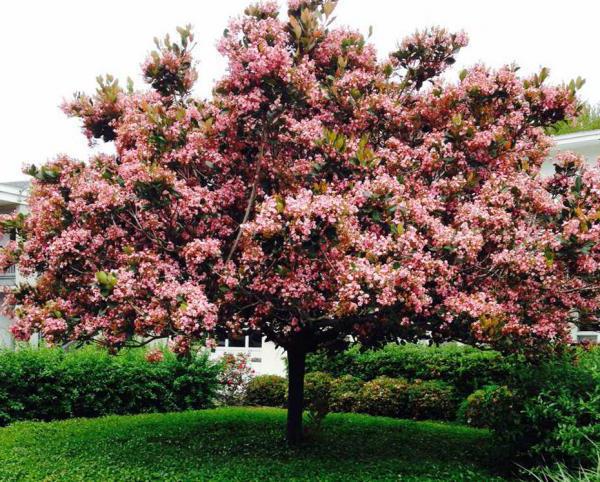

During the flowering period (April-May), the hawthorn is very similar to an apple tree, the only difference is in the size of the flower, which is smaller in comparison with the flowers of the fruit tree. Perhaps, upon close acquaintance with the hawthorn, many noticed that its flowers smell of stale fish. Such a not very pleasant aroma is due to the presence of dimethylamine, a chemical substance in them.
Pest control
Dangerous insects for hawthorn are.
- Green apple aphid. The pest feeds on the sap of the culture. With a large number of pest colonies, the shoots of the plant are deformed, the leaves wither prematurely. The fight against insects is carried out by spraying the aerial part with "Karbofos", tobacco or garlic infusion.
- Rose leaf roll.The pest spends a clutch of eggs in the bark of the plant, from which caterpillars emerge. They feed on the kidneys, destroy the ovaries. The fight against caterpillars is carried out by treatment with "Chlorophos".
- Scale apple comma-shaped. The pest feeds on the sap of the culture. It will be possible to destroy the insect by spraying with "Fufanon", "Aktara" or "Karbofos".
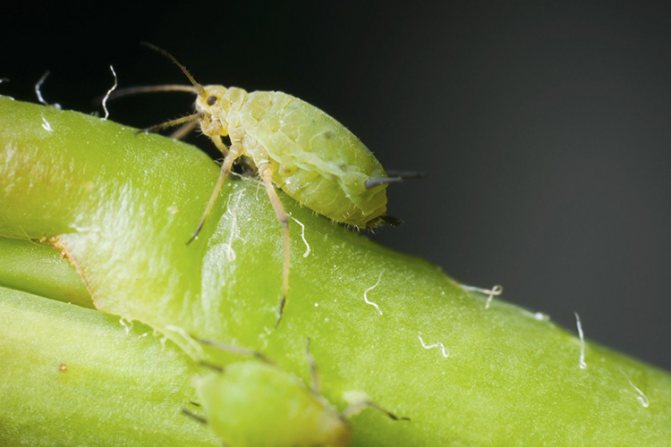

Aphid
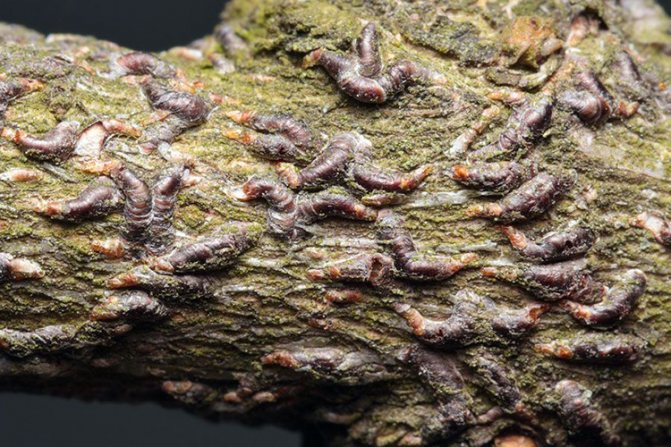

Shield
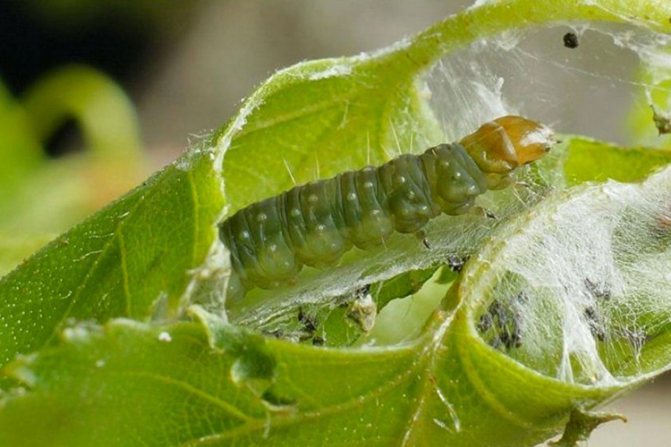

Leaf roll
Hawthorn: external characteristics
Hawthorn fruits are small apples (from 1 to 4 cm), which ripen in the autumn months, September – October. In their shape, they are spherical, elongated, pear-shaped and have from one to several strong triangular bones. The color of the berries is also different: yellow, bright orange, red, sometimes purple, depending on the type of tree. The fruits are used for making compotes, preserves, jams; grind them with sugar. In dried form, grind and add to flour, which is used for baking fruit bread.
The leaves are small, 2 to 8 cm long, dark green above, light green below, almost white. Hawthorn shrubs stand out against the background of other plants by their variegation: the lower tier of the tree has whole leaves, the upper ones are separate, three- or five-lobed. The arrangement of leaves on the branches is opposite.
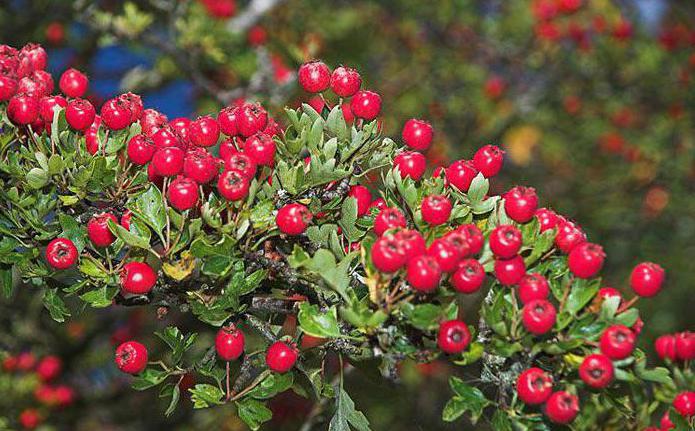

Common hawthorn (Latin calls it C. Laevigata) is a good honey plant, actively pollinated by insects, belongs to the Pink family, Apple subfamily. Translated from Greek, it means strong, apparently for the strength and hardness of wood, which is successfully used in furniture and joinery production.
Chemical composition
The healing properties of the plant are explained by the presence of many useful substances contained in different parts of the hawthorn. The leaves contain:
- acantholic, crategolic, chlorogenic, non-headic, ursolic and caffeic acids;
- quercetin;
- hyperoside;
- vitexin;
- vitexin rhamnoside;
- essential oil.
The flowers of the plant contain:
- tannins;
- flavonoids;
- essential oil;
- acetylcholine;
- chlorogenic and caffeic acids;
- quercetin;
- hyperoside.
Found in seeds:
- fatty oil;
- amygdalin;
- hyperoside.
In the bark:
- glycoside esculin.
In fruits:
- triterpenoids:
- polysaccharides;
- acetylcholine;
- choline;
- tannins;
- carotenoids;
- palmitic, stearic acid.
The fruits of hawthorn revealed:
- fatty oil;
- Sahara;
- oleanolic, ursolic, caffeic, chlorogenic acids;
- phytosterols;
- tannins;
- glycosides;
- saponins;
- hyperoside.
Hawthorn: species
Planting and caring for the hawthorn are not difficult, the plant is undemanding, minimal care is enough for it: pruning, feeding, sometimes watering.
Common hawthorn is an excellent honey plant, the honey of this plant, which has a pleasant taste and dietary properties, is recommended to improve cardiac activity, because it strengthens capillaries and vascular walls, normalizes blood circulation and increases blood pressure. The bark of the shrub is used to dye fabrics red, and the thorns were used as nails in ancient times.
The most popular is the common hawthorn Paul s Scarlet (Paul Scarlet). It is a beautifully growing tall (up to 10 meters in height) shrub, characterized by a spreading crown with slightly hanging branches. Young shoots are red-brown in color, eventually acquiring an ashy hue. The branches have spines 1.8 cm long. The leaves are large enough, dark green in color. Flowers, collected in umbellate inflorescences, are also characterized by a large size. Fruits of this variety are very rare, fruiting occurs in August-September.
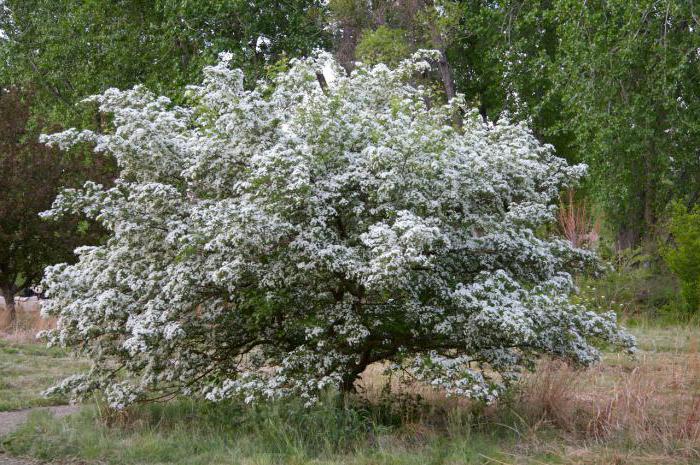

A very interesting plant variety - Mordensky hawthorn Toba attracts attention.It does not bear fruit, but its flowering is mesmerizing: the tree seems to be covered with snow. From the beginning of blooming until the moment of flowering, the flowers change their color from bright pink to pale white. The tree is compact, there are almost no thorns on the shoots. Leaves are dark green, very shiny; due to this quality, the hawthorn resembles an evergreen ornamental plant.
Medications
When conducting herbal medicine at home, it is not necessary to prepare decoctions or balms on your own. The pharmacies offer a large selection of preparations based on Siberian hawthorn. Shrub fruits are available in various dosage forms. Popular therapies include the following dietary supplements:
| The name of the dietary supplement | Release form | Structure | Indications for use |
| "Ginkgo biloba with hawthorn" | Capsules | Boyarka and Ginkgo biloba leaf extract, cellulose, calcium stearate | Sensorineural disorders, encephalopathy, arteriopathy of the lower extremities, depression like neuroticism |
| Hawthorn Forte | Pills | Extraction of berries of a Siberian lady, green tea and red wine, lactose | Rapid heart rate, low immunity, magnesium deficiency, metabolic disorders |
| Fitorelax | Dragee | Hawthorn and Valerian Extract, Magnesium Stearate, Carmellose | Insomnia, nervous disorders, heart pain, increased fatigue |
| "Flores Grataegi" | Granule bags | Plant flowers | Inflammation of the genitourinary system, hypertension |
| "Doppelherz active cardio" | pills | Fruit and leaf powder, potassium and magnesium aspartate, silicon, riboflavin, talc | Low activity of the cardiovascular system |
Dietary supplements are not potent drugs, but, regularly taking them in combination with a healthy lifestyle, patients notice an improvement in their well-being, which is confirmed by positive reviews.
Hawthorn in landscape design
Common hawthorn, planting and caring for which is easy enough even for a novice gardener, only needs three factors: lighting, periodic feeding and pruning. With high-quality care, the plant will not only delight with useful fruits appreciated by traditional medicine, but also decorate the backyard with its rich appearance.
In landscape design and decorative floriculture, hawthorn is successfully used to create the following compositions:
- curbs and green fences;
- flower beds;
- rockeries (compositions with large stones and boulders);
- topiary (decorative haircut);
- alleys;
- various garden and flower arrangements, located both in the sun and in the shade;
- strengthening the banks of artificial reservoirs;
- planting as a single plant.
Landing rules
Red orange
A hawthorn, planted on a plot in the form of a decorative fence, due to its thorns, is an insurmountable obstacle and at the same time looks very decorative. The plant tolerates a haircut well. Barberry, bird cherry, Nezhinskaya mountain ash will be a wonderful company for hawthorn. It is better to propagate the plant with grafted seedlings, in this case it will begin to bear fruit faster.
Advice! To protect other plantations from cold winds, hawthorns are planted from the north and northeastern sides of the garden. For decorative purposes, it is better to plant the plant in a sunny place. Such specimens are strikingly different from those grown in the shade.
For planting a seedling, a pit of 50 × 50 cm is prepared. A drainage from broken bricks is placed at the bottom, and then a mixture of a fertile soil layer with two handfuls of ash is laid, 3 tbsp. l. superphosphate and the addition of humus. The soil with fertilizer must be carefully shoveled. The seedling is planted, deepening the root collar by 3-5 cm. In the near-stem circle, a shallow hole is made for watering.After planting, 5 buckets of water are poured under the plants intermittently. The ground should remain moist for the first 2 weeks for the seedling to take root well.
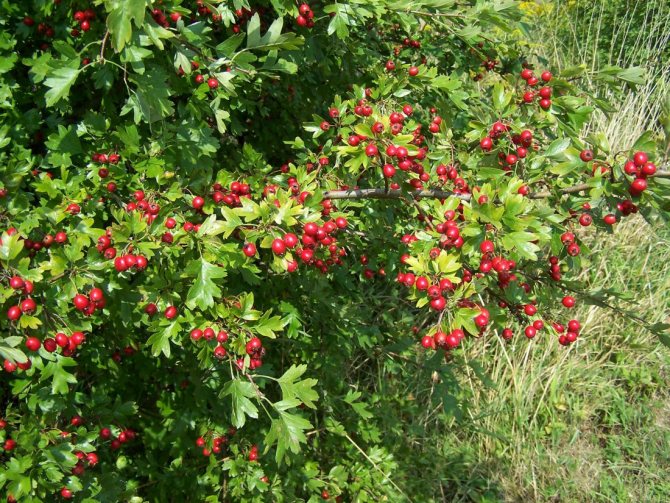

It is better to propagate the plant with grafted seedlings, in this case it will begin to bear fruit faster.
Factors of successful plant care
Common hawthorn is a winter-hardy plant, easily withstands low temperatures and does not need additional insulation. Summer heat is also not terrible for him. The plant easily tolerates periods of drought, does not require additional watering and humidification of the air. It is recommended to water young specimens, the root system of which is still in the stage of formation.
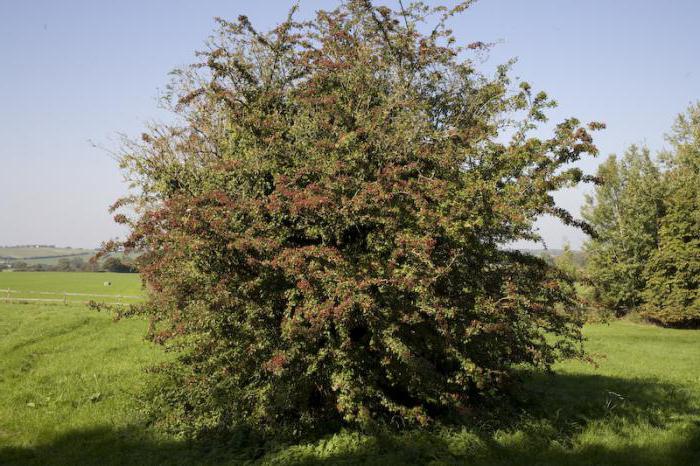

Good lighting is one of the important factors in the successful growth of a shrub; he is not afraid of direct sunlight, unlike other plants, his leaves do not get burned. With diffused light and a small shadow, the plant will feel quite calm, a deep shadow will negatively affect the hawthorn: the plant will look poor, its fruiting will fall.
Common hawthorn is loyal to any soil, an important condition is the absence of groundwater at the surface of the earth. Like any plant, such a bush rich in natural gifts needs feeding. The first application of organic fertilizers (manure or poultry manure solution) is recommended at planting, then every year in spring or at the beginning of the summer period.
General features of cultivation
- Hawthorns are photophilous, they can tolerate shading, but at the same time they do not bloom and bear fruit so abundantly, they are drought-resistant, they are relatively little demanding on the soil.
- Hawthorns are damaged by a significant number of pests and diseases in common with traditional fruit plants. The main pests are butterflies (especially hawthorn), aphids, apple worm, flower-eating beetles; of diseases - powdery mildew and leaf rust.
- Propagated by long-term stratified seeds, root suckers, layering; garden forms - by grafting.
- Hawthorns are excellent at forming haircut, which promotes the development of thorns. Hawthorn hedges are pruned after flowering or in autumn.
P.S. And remember, just by changing your consumption - together we are changing the world! <>
Hawthorn pruning
An important element in the care of hawthorns is pruning, aimed at forming the crown and sanitizing the plant, which actively forms numerous shoots. It is recommended to carry out this operation before the foliage bloom, in early spring, when the hawthorn is still dormant.
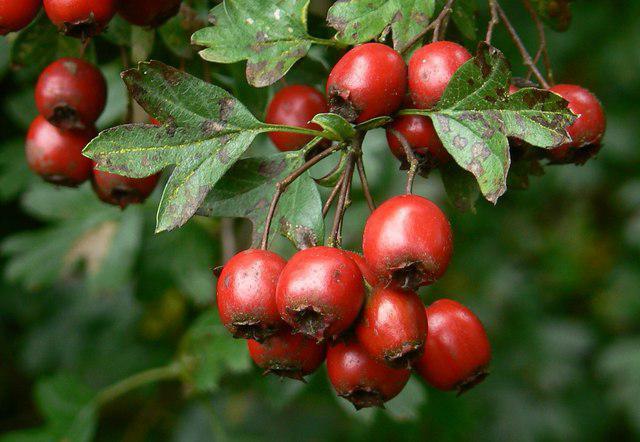

When forming green hedges, it is recommended to prune the plant once a month, while removing not only damaged branches, but also lateral shoots. This will stimulate the growth of the shrub and the formation of a dense crown.
Decoction
When diagnosing thrombophlebitis, inflammation and thickening of the venous wall occurs, as a result of which patients complain of sharp pains, swelling of the legs. In these cases, it is recommended to make a medicinal mixture based on blood-red hawthorn. According to the recipe, you need to mix 2 tablespoons of dry and chopped berries with onion peels in the same amount and 50 g of fresh pine needles. Boil the collection for 10 minutes and leave for one day. After straining, patients take the medicine instead of water, 1 liter per day.
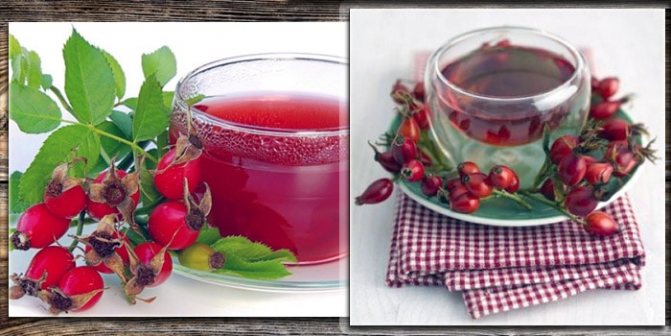

For the treatment of dystonia
It is detected in 40% of the adult population, and phytotherapists offer the following herbal recipe: mix 20 g of dry flowers of Siberian boyar and valerian root, 10 g of periwinkle leaves, 30 g of chopped mistletoe and boil in a water bath for 10 minutes. After an hour of infusion, strain the broth through cheesecloth folded in several layers and use as directed. Patients taking medicinal balm for 4 months notice the restoration of hormonal levels.
With angina
If accompanied by pain in the sternum, herbalists recommend boiling 2 tablespoons of dried flowers and drinking 30 ml three times a day half an hour before meals.
Slimming
Boyarka helps to normalize excess weight and speed up metabolism, so its benefits are invaluable in dietary nutrition. It is necessary to mix in equal proportions rosehip and boyarka berries and boil for 10 minutes. The broth is taken in 50 ml after meals.
With high blood pressure
For the treatment of hypertension, prepare a herbal collection of 40 g of lady's flowers, 20 g of calendula, clover, peppermint. Pour the dry mixture with a glass of boiling water and leave for 3 hours. Drink the strained broth in a tablespoon 3-4 times a day.
Learn more: Useful properties and contraindications of field mustard
The use of hawthorn in traditional medicine
Common hawthorn is a plant widely used in folk medicine. Having a positive effect on the work of the heart, it strengthens the walls of blood vessels, causing an increase in blood flow. Also, the infusion of hawthorn fruits, which is recommended as a prophylactic agent for the elderly population, helps with chronic fatigue, constant overwork, and prevents the occurrence of various diseases. Useful infusion of hawthorn fruit helps to reduce blood cholesterol, has a mild diuretic effect. Traditional medicine successfully uses all parts of the plant: fruits, flowers, leaves and bark. To obtain a positive effect, it is recommended to take them for a long time.
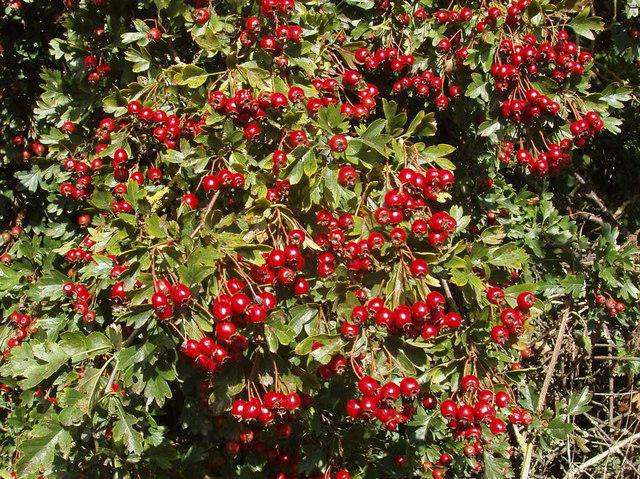

The infusion of hawthorn fruits helps to normalize sleep, improve the functioning of the heart system and the state of the body as a whole. Hawthorn is used to recuperate after suffering a serious illness. The infusion of flowers is much more effective than the infusion of the fruits of the plant and is used in the treatment of atherosclerosis, angina pectoris, with dizziness and at the initial stage of the climatic period. The extract of prickly hawthorn is used in the treatment of herpes, having a suppressive effect on this virus. A decoction of the bark of branches is used for dizziness, diarrhea, shortness of breath, fever and menopause. When using hawthorn, the dosage should be observed, otherwise vomiting, heart rhythm disturbances, nausea and dizziness may occur. Hawthorn is contraindicated for hypotensive patients, because it lowers blood pressure. It is not recommended for use during pregnancy and lactation.
Tincture
Phytotherapists draw the attention of patients to the fact that there is no significant difference in which balm will be used: water or alcohol. The principle of reception is the same, regardless of the recipe: drink 40-50 ml three times a day. The duration of therapy for hypertension, bladder, heart disease, rheumatism depends on the severity of the clinical picture and is on average one month. Phytotherapists, according to the intensity of the healing effect, distinguish the following recipes.
Infusion of flowers: pour 50 g of dry raw materials with 600 ml of boiling water and put in a dark place for one hour. A decoction prepared in this way is shown to be taken by patients suffering from insomnia, palpitations.
Fresh berry balm: chop the hawthorn fruit and add 200 ml of rubbing alcohol. To insist, remove the container for 3 weeks in a dark place, remembering to shake it daily. After straining, the medicinal mixture is ready for use.
Infusion of dry fruits: grind 150 g of berries and pour in a liter of vodka, put in a cool place for 20 days. After the allotted time, the finished balm acquires a transparent shade. If you are intolerant to ethanol, it is permissible to dilute a teaspoon of the medicine with the same amount of water.
Collection of raw materials
Collecting hawthorn inflorescences is required during their flowering period, in May in dry weather and consumed in a dried form. The fruits should be harvested in late summer or early autumn, when they turn red, the bark - in April-May.
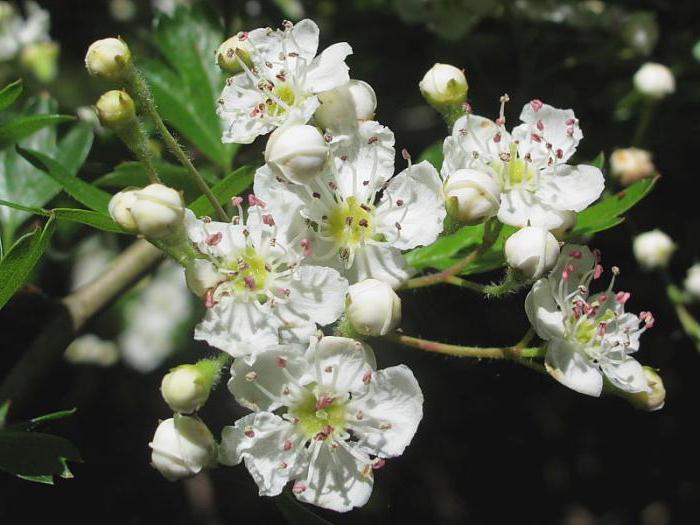

The collected raw materials are recommended to be dried in a dry ventilated area and placed in tightly closed containers to avoid frequent contact with air. The dried raw materials are characterized by a pleasant and delicate aroma. The shelf life of fruits and bark is about 2 years, flowers are saved for about a year.
Useful and medicinal properties
Hawthorn flowers and leaves have medicinal properties. They make tinctures and dry them for tea. The fruits contain many vitamins, which are also stored in dried berries.
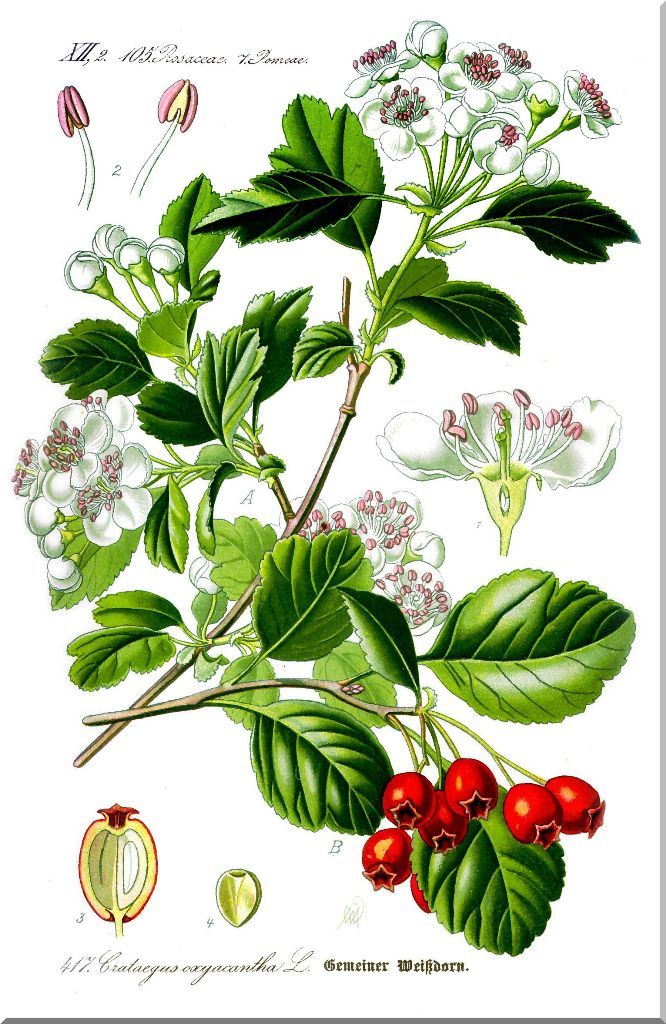

Hawthorn is useful for vegetative-vascular dystonia, mild disturbances in the work of the heart, strengthens blood vessels, and has soothing properties. But, it can be used as a medicine only after consulting a doctor. And here is how vitamin tea, which increases efficiency, normalizes blood pressure, saves from insomnia, you can drink it every day. Leaves and flowers are harvested to make tea in the spring. Flowers are most useful when they have not fully blossomed. They are dried in the shade, in a warm ventilated room, spread out in a thin layer. Stir lightly from time to time. Stored in glass jars, the lid must be closed. The fruits are dried in autumn. More valuable substances are stored when drying in an oven at a minimum temperature, or in a special dryer for vegetables and fruits. Hawthorn tea can be made with other herbs and fruits. Ivan tea, dried raspberries, rose hips, mint, lemon balm, thyme - there are many options. Experiment and look for your own version.
The only rule when preparing tea is that the dry mixture should not exceed 1/5 of the volume of the teapot. Exceeding the norm can be harmful to health.
There are many benefits to frozen hawthorn. It is slightly defrosted and twisted in a meat grinder along with lemon. Then a little honey is added - a vitamin mixture is obtained. For consumption, 2 teaspoons are diluted in warm water and drunk at any time.

